Twitter Https://twitter.com/_shillo

twitter https://twitter.com/_shillo
More Posts from Terra-fatalis and Others

i kinda love him
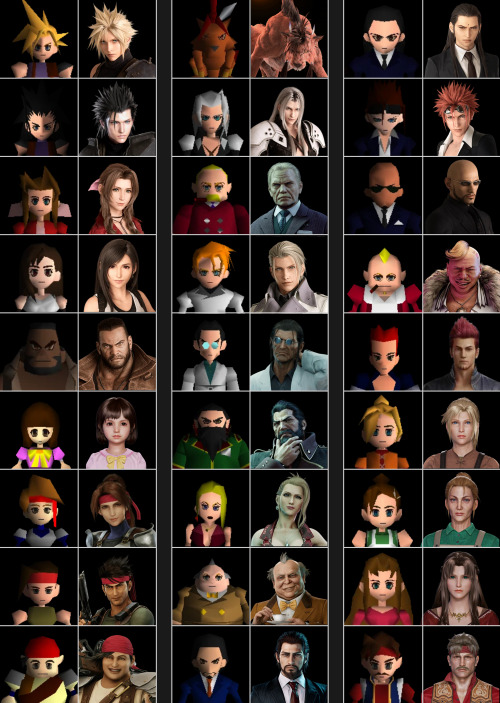
Graphics enhancement, 23 years later!
FFVII Remake Easter Eggs and compilation continuity - Part 3: ADVENT CHILDREN

KIDS
Feeling close to death, Biggs asks Cloud to take care for him of the orphans of the Leaf House. Cloud refuses implying that he doesn’t like kids. Anyway, not even one year later he will take care of both Marlene and Denzel, two orphans.

SPARE GLASSES
In the movie Rude broke his glasses during the fight with the Remnants but he immediately replaced them with another pair. The same happens in the Remake in Chapter 8, during the fight against Cloud and Aerith.

AERITH’S CHURCH
The design of Aerith’s church is almost the same of the one showed in Advent Children.

AERITH AND MARLENE
Just before the plate fall, Aerith goes to Seventh Heaven to save Marlene and the two share a sort of mysterious interaction. Despite having known her for so little, after two years Marlene will still be very fond of Aerith. She’ll have her same hairstyle but she’ll also be “special” since she’ll be the only kid not affected by Geostigma and she’ll perceive Aerith’s presence during the battle against Sephiroth.

SEVENTH HEAVEN
On the wall of Seventh Heaven there are some AC references: a picture of the future Seventh heaven and a blurred photo of future Barret, Marlene, Nanaki and Cait Sith.

GEOSTIGMA
When Cloud met Sephiroth in the drum, he grabbed his left arm in pain while being mentally tortured - the same arm that will be affected by Geostigma.

MOTORCYCLE FIGHT
The motorcycle fight with Roche recalls the chase on the highway of Midgar-Edge with the Remnants.

WHISPERS
In Chapter 18 the Whispers mysteriously started cyrcling around the Shinra tower the same way the corrupted Lifestream will do in Advent Children.

When Sephiroth delivere the line “Destiny comes”, the Whispers started escaping in every direcion from the top of the Shinra tower. The same happens in the movie when the Lifestream finally erupts in the church.

VISIONS
During the battle against Whisper Harbinger, all the members of the group have some visions of the future, taken directly from the movie.

THE REMNANTS
Whisper Harbinger summons three “entities from a future timeline that have manifested in the present day", that the Ultimania confirms being manifestations of the Remnants:
Whishper Rubrum is a swordsman like Kadaj;
Whisper Viridi is a pincher like Loz;
Whisper Croceo is a shooter.

When they materialize Whisper Rubrum appears in front of Cloud and Whisper Viridi in front of Tifa (in the movie Cloud fought against Kadaj and Tifa against Loz).

After the battle the three entities merge together in Whisper Bahamut (in the movie the three remnants summoned Bahamut SIN).

SEPHIROTH
Remake Sephiroth seems to have already experienced the events of Advent Children. In the original story he seemed to be indifferent about Cloud’s feelings, considering him no more than a numb clone, while in the Remake he started mentally tormenting him from the beginning.
Tell me what you cherish most, give me the pleasure of taking it away.

7R: You’re too weak to save anyone. Not even yourself. - You’ve failed again, I see.
AC: I’m not fit to help anyone. Not my family. Not my friends. Nobody.

FINAL BATTLE
Sephiroth starts the final battle with the same gesture he used in the movie to summon the corrupted Lifestream.

He throws at the enemies debris of a destroyed Midgar like in the movie.

In both installments there’s a huge swirl of corrupted Lifestream in the sky.

Sephiroth shows one single black wing like he did in the final stages of the battle in Advent Children.

-
For the other parts refer to the masterpost
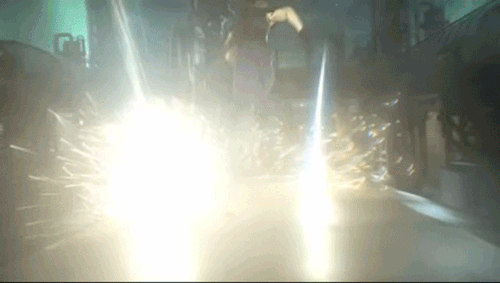
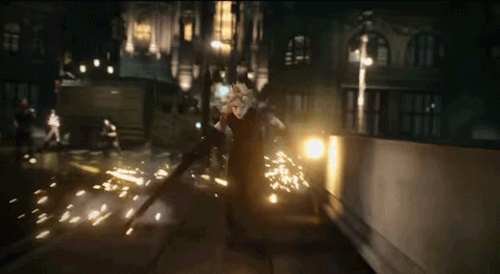
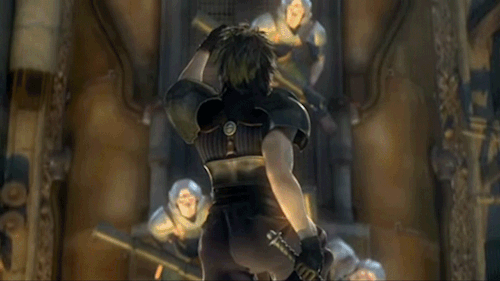
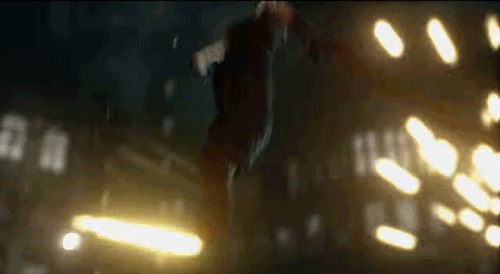
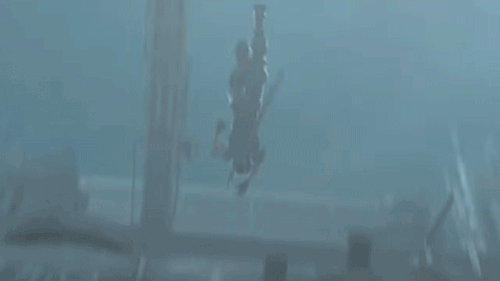
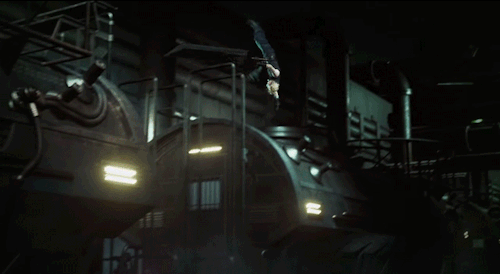
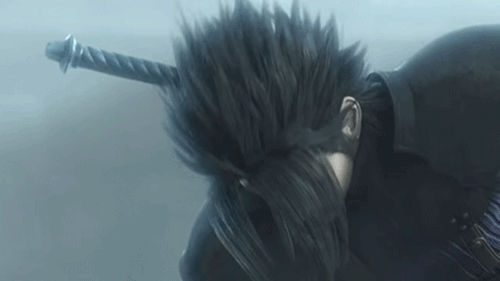
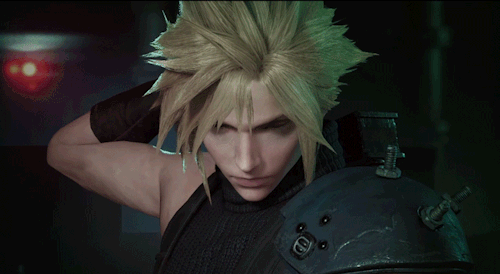
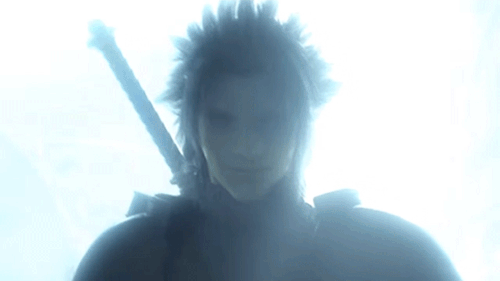
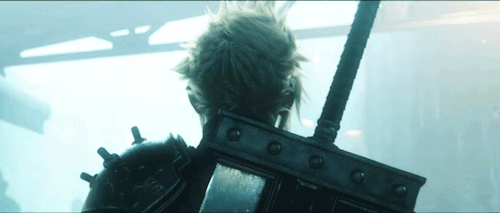
Zack and Cloud parallels
Crisis Core vs. Final Fantasy VII Remake
I love how Nibelheim is casually actually buckwild insane in terms of ecology. Harsh mountain landscape where almost no plantlife grows and the air is filled with radiation poisoning and 90% of the random encounters aren't even escaped lab experiments or mutated beasts they're just. Normal wolves except they're 300% stronger than the wolves from the game's starting area and also sometimes you turn the corner and there's. A dragon. Completely normal and unremarkable predator, the fire breathing dragon. Also the locals believe if you climb high enough up the mountain you can get to the land of the dead but why the fuck would you do that so everyone just goes about their lives like a short hike away from the literal afterlife. Truly no other town could have produced the likes of Cloud Strife and Tifa Lockheart.
Wutai: etymologies and possible real-life references
As suggested by my profile pic, Remake Yuffie stole my heart. The DLC made a great job introducing her and giving her deep characterization and motivations for the following parts of the story. I have no doubt Wutai is going to be great, and I had a lot of fun trying to find the possible sources behind the creation of Yuffie's homeland, anyway, I'm not a sinologist nor an expert of eastern religions, so everything in this post has to be taken with a grain of salt.
The following post has been inspired by this post by@allsortsoflicorice and the following TLS thread (thanks!).
-
Wutai (ウータイ) is an island state in the far west of the FFVII world map. It had always been a proud and powerful nation, and when Shinra Electic Power Company menaced to establish its economical domain with the installment of Mako reactors on its soil, the nation wadged a war that lasted several years. In 0001, after the capture of Fort Tamblin, Wutai's leader Godo Kisaragi finally surrendered to Shinra and Wutai became a mere touristic attraction, even if resistance cells continued their work and became affiliated with Avalanche.

The village stands at the base of a mountain, immersed in a wide forest and crossed by a river. The architecture of the buildings is inspired by real-life far East style and there's a big statue of a local deity carved on the side of the mountain facing the village.

Wutai is the homeland of Yuffie Kisaragi. In the original FFVII, since Yuffie was an optional character, also Wutai was an optional and perfectly skippable location, nonetheless many cultural references were mixed to create this beautiful place.
Moreover, I think we can expect Remake Wutai to have a more influent role in the FFVII universe, since the shape of a pagoda already appeared in Aerith's mural painting, between Cosmo Canyon and the Cetras.

Final Fantasy games are well known to be based on a heterogeneus mix of cultural influences, from Polytheistic to Monotheistic religions and myths, up until Eastern religions and phylosophies that are especially prominent in Wutai.
One of the main themes of FFVII is the cycle of life, symbolized by the Lifestream as both the physical and metaphysical place where souls merge together and allow the rebirth of new life forms in a neverending cycle. This theme is reminiscent of the concept of Saṃsāra, originated in India and then exported to the far East lands through Buddhism (e.g. Melphie's pinwheel hair-clip could symbolize this theme).
Buddhim in particoular seems to have been a great source of inspiration for the creation of this amazing location.
-
Wutai is the real toponym of a Chinese holy mountain, referring to its uncommon shape and it is one of the four sacred mountains in Chinese Buddhism (and Taoism). Interestingly enough there's an old legend about this mountain that involves the King of Dragons.
To provide context, dragons are sacred creature in Eastern folklore. Most of oriental dragons stem from the Chinese version, called Long, traditionally depicted as a snake-like creature with four legs and/or wings. Unlike their western counterparts, Longs are benevolent beings, associated with power, good luck, fertility and rain. They use to dwell in rivers, lakes, seas, they roam the skies and control weather ("Raya and the last dragon" provides good and simple examples of this folkloristic creatures and their legendary powers).
It's not farfetched to see the nod between the Dragon King and the presence in FFVII Wutai of Leviathan, a dragon-like summon that could be achieved in the OG after completing the Pagoda side quest, and that serves as Wutai guard water-deity.
Leviathan was introduced for the first time in the franchise in Final Fantasy II as a monster, while with Final Fantasy III it became a recurrent Summon associated to water, often known as "Sea King" or "Lord of all Waters". The name comes from the homonymous demoniac creature, a fearsome evil sea serpent of the Middle Eastern mythology that symbolizes chaos. FFVII Leviathan preservs just the name of this biblical reference but embodies perfectly the iconography and symbolism of Chinese Longs. Indeed the village is built on a big river.


(from the Fort Tamblin section of Crisis Core: Leviathan fountain on the left, and Wutais banners, depicting a serpentine creature wrapped around a sword, on the right)
As we said before, there's a huge sculpture carved in the side of the mountain facing the town, called "Da-Chao statue", a water deity.

It's hard to establish the real etymology of its name, since it's written in katakana (ダチャオ), but it could come from the chinese

This word exists also in Japanese (pronounced oosho) and it could be roughly translated also as "big tide" (spring tide is a phenomenon occurring twice a month during full moon and new moon, when Earth, Sun and Moon are aligned, affecting tide's range that reaches its maximum). Worth noting that Leviathan can perform "Tidal Wave".
The statue is also formed by four figures. It could be a loose reference to the myth of the Dragon Kings of the Four Seas: during a period of drought the four dragon managed to make it rain without the permission of the Jade Emperor, so he punished them imprisoning them all under a mountain, where the dragons decided to turn themselves in rivers.
The group has to use the "Scales of the Sea God" (or Leviathan scales) to extinguish the fire in the cave on Da-Chao mountain, and the item can only be found in Junon underwater reactor, which could refer to the legendary Dragon King that lived in an underwater palace.
Alternatively, since the central statue has four arms (six in the pagoda version), it could be a refernce to a Buddhist guard deity called Mahakala (derived from the Hindu Shiva). Notably, this deity is associated - at least in China - with sexuality and fertility, and Don Corneo made his last despicable attempt to choose a girl between Elena and Yuffie on this statue.

From Ultimania Omega: in the guest room there's a painting representing four Buddhist figures and a six-arm deity in the middle.
Among the enemies that can be found on Mount Da-Chao, there's Garuda (ガルーダ) a Hindu and Buddhist creature, while in Crisis Core there's another set of recurrent enemies called "Vajradhara", related to Buddhism as well, while the Wutaian organization "Crescent Unit" could refer to the lunar phases and so be linked to the aforementioned meaning of Da-Chao.
-
During the pagoda side quest, after which the the group receives Leviathan summon materia, Yuffie is forced to fight five warriors, one for each stage of the building.
The names of these fighters probably come from the names of western playwrights, with the ecception of Yuffie's father, whose name is anyway related to theatre:
Gorkii -> Maxim Gorky
Shake -> William Shakespeare
Chekhov -> Anton Chekhov
Staniv -> Constantin Stanislavsky
Godo -> Godot
In Japanese, each one of them has a different way of speaking.
This odd relation with theatre could be explained by the fact that the chinese word "wutai" (same tones) can be written in two different ways:

The word 舞台 (butai) in Japanese specifically means "theatre stage" or "theatre setting".
The inspiration for this part of the game could be the traditional Japanese Noh theatre. Usually Noh plays are composed of five standalone pieces selected from five different categories, and many of the plays include shapeshifting creatures.
As stated before, Godo is the only fighter whose name is not that of a playwright but a fictional character, Godot. It could be linked to the fact that the word ゴドー in Japanese is homophone to 悟道, a Buddhist term referring to the path to the enlightment.
As a boss, Godo becomes a monster that, in my opinion, is a reference to Asuras, Hindu demigods with three faces and four arms that appear also in Buddhism. In the latter, it is traditionally told that Asuras were dismissed by the heavenly world they shared with gods, which could be a loose reference to Wutai losing the war (in this case "Godo" could be linked also to the English "God").

-
Finally: Yuffie Kisaragi.
Yuffie is not a real name, especially not a Japanese one since the sound fi doesn't exist in that language. The only real-life connection I could find is a very similar Chinese female name, Yufei 雨霏, whose meaning is something like "happy even though it rains", which fits her personality.
Kisaragi is often mistankenly translated as February but in reality 如月 was the old name for the second month of the Japanese lunar calendar that, traditionally, marked the beginning of spring.
I'm totally clueless about the meanings of Melphie and Sonon's names.
-
Sadly I haven't found any hint about what could be the origin of Da-Chao beans, nor any further reason behind the name of "Fort Tamblin" (タンブリン->tambourine).
If anybody has suggestions or corrections they'll be very well appreciated!
Zack’s Last Stad
Find the differences!
CRISIS CORE vs FF7R comparison
Parallel #3
Same gesture

[Previous]
-
 asteriteblue reblogged this · 2 months ago
asteriteblue reblogged this · 2 months ago -
 asteriteblue liked this · 2 months ago
asteriteblue liked this · 2 months ago -
 asalo liked this · 3 months ago
asalo liked this · 3 months ago -
 yulemaiart liked this · 3 months ago
yulemaiart liked this · 3 months ago -
 hotdagas reblogged this · 4 months ago
hotdagas reblogged this · 4 months ago -
 strange-visitor liked this · 5 months ago
strange-visitor liked this · 5 months ago -
 katezerker liked this · 7 months ago
katezerker liked this · 7 months ago -
 flowers-of-rosaria reblogged this · 7 months ago
flowers-of-rosaria reblogged this · 7 months ago -
 greenwaterskeeter liked this · 8 months ago
greenwaterskeeter liked this · 8 months ago -
 neutronstarsinspace reblogged this · 9 months ago
neutronstarsinspace reblogged this · 9 months ago -
 charterandbarter reblogged this · 10 months ago
charterandbarter reblogged this · 10 months ago -
 mariogirl369 liked this · 10 months ago
mariogirl369 liked this · 10 months ago -
 tweetsfrommidgar reblogged this · 10 months ago
tweetsfrommidgar reblogged this · 10 months ago -
 here-be-ninjas liked this · 10 months ago
here-be-ninjas liked this · 10 months ago -
 holyflippingfaerghus liked this · 10 months ago
holyflippingfaerghus liked this · 10 months ago -
 hotdagas liked this · 10 months ago
hotdagas liked this · 10 months ago -
 johnbly reblogged this · 10 months ago
johnbly reblogged this · 10 months ago -
 lumine-no-hikari liked this · 11 months ago
lumine-no-hikari liked this · 11 months ago -
 a-view-without-light-pollution reblogged this · 11 months ago
a-view-without-light-pollution reblogged this · 11 months ago -
 bjdavis5 reblogged this · 11 months ago
bjdavis5 reblogged this · 11 months ago -
 fatfeline liked this · 11 months ago
fatfeline liked this · 11 months ago -
 bubblehshrubbereh reblogged this · 11 months ago
bubblehshrubbereh reblogged this · 11 months ago -
 bubblehshrubbereh liked this · 11 months ago
bubblehshrubbereh liked this · 11 months ago -
 shadowsheik14 reblogged this · 1 year ago
shadowsheik14 reblogged this · 1 year ago -
 x-aniparadise-x reblogged this · 1 year ago
x-aniparadise-x reblogged this · 1 year ago -
 tsukiiro reblogged this · 1 year ago
tsukiiro reblogged this · 1 year ago -
 humongousdreamershark liked this · 1 year ago
humongousdreamershark liked this · 1 year ago -
 tale-of-light-and-darkness liked this · 1 year ago
tale-of-light-and-darkness liked this · 1 year ago -
 indistarlight liked this · 1 year ago
indistarlight liked this · 1 year ago -
 authorafterhours reblogged this · 1 year ago
authorafterhours reblogged this · 1 year ago -
 anthea-the-maia liked this · 1 year ago
anthea-the-maia liked this · 1 year ago -
 areumqi reblogged this · 1 year ago
areumqi reblogged this · 1 year ago -
 areumqi liked this · 1 year ago
areumqi liked this · 1 year ago -
 miloutic reblogged this · 1 year ago
miloutic reblogged this · 1 year ago -
 lessyandmina liked this · 1 year ago
lessyandmina liked this · 1 year ago -
 toxic77340106 liked this · 1 year ago
toxic77340106 liked this · 1 year ago -
 strawberrysnortshake liked this · 1 year ago
strawberrysnortshake liked this · 1 year ago -
 threefogsinatrenchcoat liked this · 1 year ago
threefogsinatrenchcoat liked this · 1 year ago -
 henrymuffinheadsworld liked this · 1 year ago
henrymuffinheadsworld liked this · 1 year ago -
 withgreatpowercomesmyfuckingdick reblogged this · 1 year ago
withgreatpowercomesmyfuckingdick reblogged this · 1 year ago -
 lycannia liked this · 1 year ago
lycannia liked this · 1 year ago -
 ofmonstersandpen liked this · 1 year ago
ofmonstersandpen liked this · 1 year ago -
 kamamo1 liked this · 1 year ago
kamamo1 liked this · 1 year ago -
 eacabubal liked this · 1 year ago
eacabubal liked this · 1 year ago -
 cina-snap liked this · 2 years ago
cina-snap liked this · 2 years ago -
 walletfullofflowers reblogged this · 2 years ago
walletfullofflowers reblogged this · 2 years ago -
 gsunny6 liked this · 2 years ago
gsunny6 liked this · 2 years ago

Hardcore FFVII fan sharing theories & fanart, sometimes silly stuff ⋆ AuDHD ⋆ She/her ⋆ INTP ⋆ Atheist ⋆ Non-native English speaker, be merciful with my odd way of writing ⋆ Twitter @TerraFatalis
234 posts

